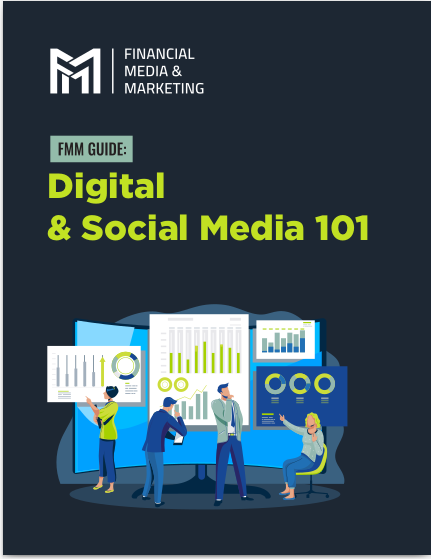Key Takeaways
-
Automated marketing tools in 2025 are far more than time-savers; they are intelligent systems that help you reduce burnout and focus on strategy rather than routine.
-
When used correctly, these tools streamline content distribution, customer segmentation, and lead nurturing without compromising authenticity or quality.
Understanding Automated Marketing in 2025
You’ve likely encountered the term “automated marketing” across platforms and pitches, but its true function in your workflow might still feel abstract. In 2025, automated marketing tools go well beyond basic email scheduling. They are built with AI, machine learning, and real-time analytics to support your efforts without replacing your strategic input.
Marketing automation refers to the use of software to execute, manage, and monitor marketing tasks automatically. This includes:
-
Email campaign scheduling
-
Lead scoring and segmentation
-
Social media posting
-
Personalized customer journeys
-
Performance tracking and reporting
The tools don’t replace your vision. Instead, they execute repetitive processes at scale so you can focus on creativity, decision-making, and relationship-building.
Why Automation Feels Overwhelming (and How to Fix That)
The fear that automation is too complicated or “cold” is still common among professionals. But the issue usually stems from poor onboarding, not the tools themselves. Here’s how to reduce the stress:
-
Start with one workflow: Pick a process that consumes time daily, like email follow-ups, and automate that first.
-
Use pre-built templates: Many systems offer built-in campaigns you can customize.
-
Set realistic goals: Automate 20-30% of your tasks in the first 90 days.
-
Learn through usage: Use weekly reports to guide improvements instead of building everything at once.
When approached incrementally, automation becomes less of a burden and more of a strategic ally.
Areas Where Automation Actually Saves You Time
Not all processes benefit equally from automation. The key is to identify where the greatest time savings occur with minimal effort. In 2025, professionals report the biggest returns in the following areas:
1. Email Campaigns
You can automate:
-
Welcome sequences for new subscribers
-
Re-engagement emails for inactive users
-
Newsletters tailored to segmented audiences
Time saved: Up to 15 hours monthly
2. Social Media Publishing
No more manually logging into every platform.
-
Schedule a week or month of content in one sitting
-
Automatically recycle evergreen posts
-
Use AI to suggest optimal posting times
Time saved: Around 10-12 hours monthly
3. Lead Management
Automated systems:
-
Score leads based on behavior
-
Segment based on interests or demographics
-
Trigger workflows like follow-up calls or emails
Time saved: Up to 8 hours monthly
4. Reporting and Analytics
Manual data consolidation is out. Automation tools:
-
Pull data from multiple platforms
-
Visualize performance trends
-
Recommend next steps based on KPIs
Time saved: 5-6 hours per month and days of back-and-forth in quarterly planning
The Human Side of Automated Marketing
Contrary to the myth, automated marketing doesn’t eliminate personalization. It enhances it. In 2025, personalization engines use behavioral insights to customize:
-
Product recommendations
-
Subject lines and message timing
-
Landing page content
What’s important is your oversight. Automation delivers the data-driven foundation, but you control the narrative, tone, and purpose.
To preserve the human touch:
-
Write authentic copy that sounds like you
-
Use dynamic fields to personalize, not generalize
-
Periodically audit workflows to ensure alignment with your brand
Key Metrics to Watch Post-Automation
Implementing automated tools without measuring the right metrics leads to poor outcomes. To ensure your strategy remains effective, monitor these post-implementation indicators:
-
Engagement Rates: Monitor open and click-through rates across campaigns.
-
Lead-to-Customer Rate: Are your automated workflows nurturing or losing leads?
-
Time Spent on Campaigns: Compare pre- and post-automation to validate time savings.
-
ROI on Tools: Compare cost vs. value—consider hours saved as part of the return.
Evaluate monthly for the first 6 months after adoption, and then quarterly.
Financial Considerations for 2025
Automated marketing tools in 2025 vary in complexity and cost, but you should expect:
-
Initial onboarding costs: Time investment ranges from 10–20 hours over the first 30 days.
-
Learning curve duration: Most professionals report full proficiency within 2–3 months.
-
Subscription or licensing fees: These may be ongoing, but ROI is often visible within the first quarter when tasks are streamlined.
Though the upfront effort is notable, the long-term payoff in hours saved and reduced stress is substantial.
Common Mistakes to Avoid
Automation, when mishandled, can lead to disengaged audiences and missed opportunities. Be aware of these frequent pitfalls:
-
Over-automating: Don’t set and forget. Maintain oversight and adapt.
-
Ignoring audience feedback: Review unsubscribes, spam reports, and survey data.
-
Lack of integration: Ensure tools work with your CRM, calendar, and content systems.
-
Forgetting A/B testing: Automated tools enable experimentation. Use it.
Correcting these mistakes early prevents poor user experiences and underperformance.
Questions to Ask Before Committing to a Tool
Before investing time and budget into any automated marketing system, ask yourself:
-
Does it support multi-channel workflows (email, SMS, social)?
-
Is it compatible with your existing CRM or data sources?
-
How much technical knowledge is required for setup and operation?
-
Are there clear onboarding resources and support?
-
Can you customize campaigns for different audience segments?
A clear “yes” to most of these questions typically signals a good fit.
How to Maintain Control Without Micromanaging
One of the biggest fears professionals express is losing control of their message. The solution isn’t manual labor—it’s smart oversight:
-
Set up alert systems to notify you when engagement drops
-
Review workflow maps monthly
-
Build fail-safes: auto-pausing campaigns if bounce rates spike
Think of automation as a co-pilot. You’re still steering—just not handling every lever alone.
Planning for the Future: How to Scale Automation
Once the foundation is solid, the next step is scaling. Here’s what growth-minded professionals are doing in 2025:
-
Mapping end-to-end user journeys to identify more automation points
-
Connecting behavioral data from customer interactions for smarter triggers
-
Aligning marketing and sales workflows to shorten the lead-to-close cycle
-
Running quarterly audits to refresh templates and realign strategy
Scaling is not about more tools—it’s about making your current ones work smarter.
Automation That Works With You, Not Instead of You
In 2025, automated marketing tools don’t replace the strategist—they support them. The key is to start intentionally, measure consistently, and adapt as your needs evolve.
By focusing on the tasks you can offload and the insights you can gain, you’ll spend less time in spreadsheets and more time on strategic initiatives.
Automation should never feel like a loss of control. When done right, it’s the freedom to do your best work without drowning in to-do lists.










